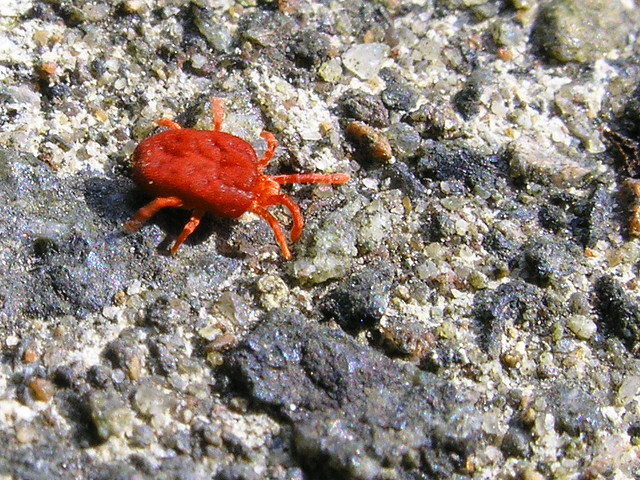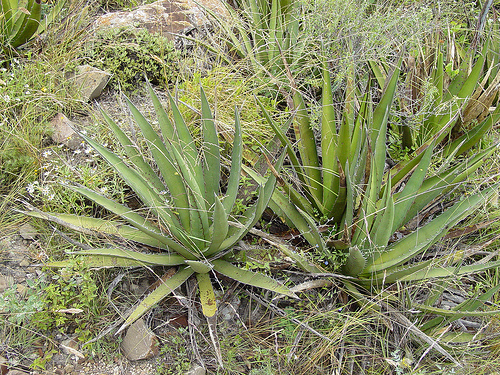Interactions
One organism that forms a
predatory relationship with Peyote plants is
Tetranychus urticae. The common name for this
species is the red spider mite. These little
creatures are very small with an average body size
of only 0.5mm. These red, crawling, wingless,
insects may not seem like much of a threat to the
peyote plant, but they can do a lot of damage. Once
they seek their teeth into the flesh of the plant,
it immediately goes into dormancy. They do extensive
damage to the plant parts including leaves, buds,
and flowers. Unless the problem is eradicated the
plants will whiter and die. However, if the red
spider mites are killed off, the peyote plant will
only suffer minor damage and will eventually come
out of dormancy.


For tips on how to control a
Tetranychus urticae invasion please visit this
site
While peyote can grow
under a large range of conditions, it is commonly
found forming a commensal relationship with
surrounding dessert plants. Commensalism is a
symbiotic relationship in which one organism
receives benefits while the other remains
unaffected. Peyote is commonly found growing under
neighboring shrubs in order to get more shade. The
plants that it most commonly utilizes are
Proso-pis glandulous (mesquite), Larrea
tridentate (creosote bush), and Agave
lechuguilla.
To learn interesting facts about Peyote please visit the extras page.

